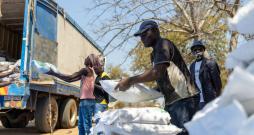"Walk with Me"
A lesson plan toward reconciliation
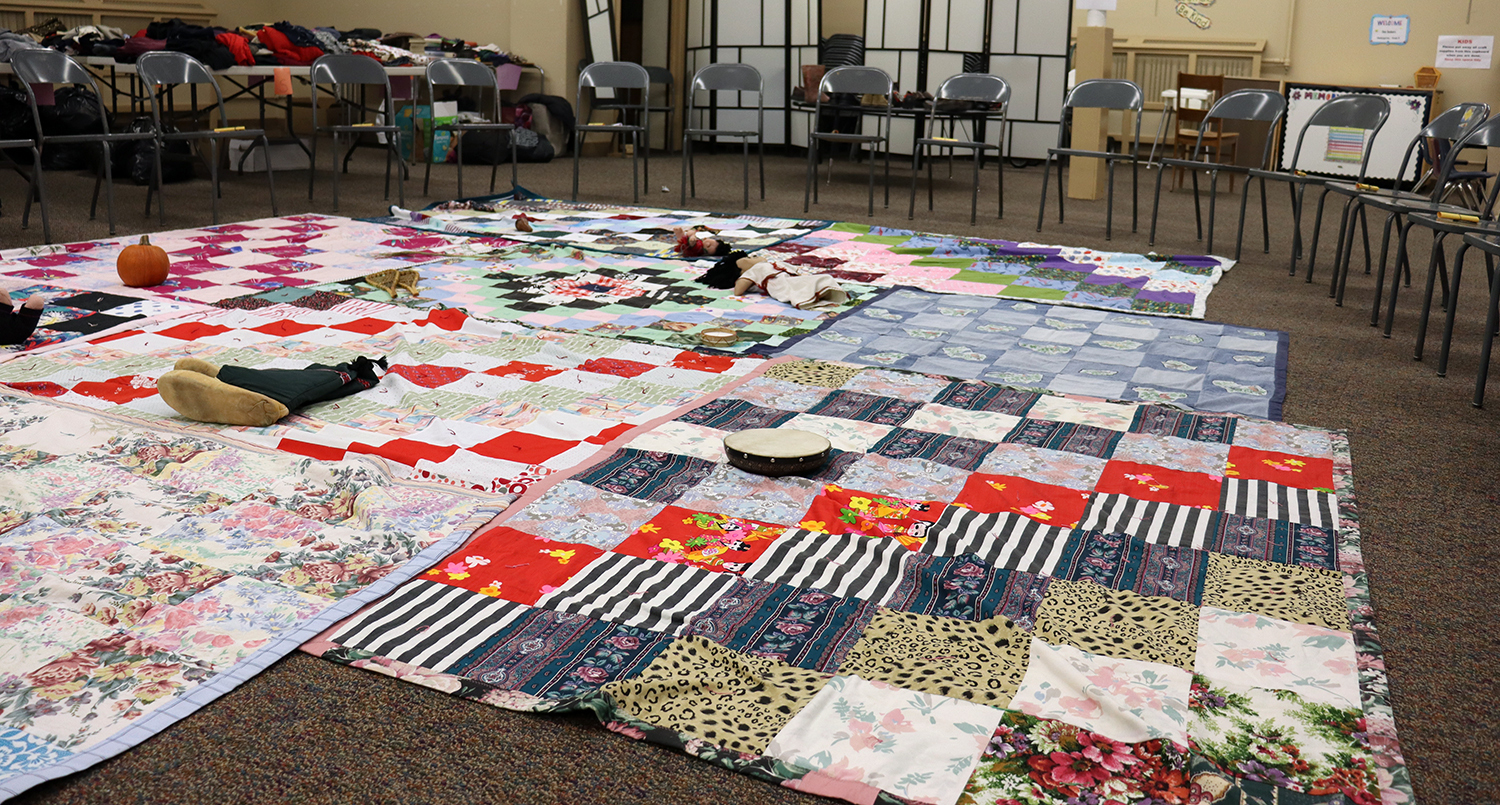
Education is key to reconciliation and the key to good education is a lesson plan that sticks.
The Blanket Exercise is one such lesson plan. Developed by KAIROS, the Blanket Exercise is based on a method that uses participatory education to weave storytelling and land-based learning into a one-hour exercise. Participants are walked through different phases of the exercise by a narrator, the goal being to help people encounter the history of Indigenous peoples in Canada on an emotional and intellectual level.
More than 30 members of Grace Bible Church and its community gathered on a cold wintry evening in late November in Winnipeg, located on Treaty 1 Territory, for their first experience with the Blanket Exercise.
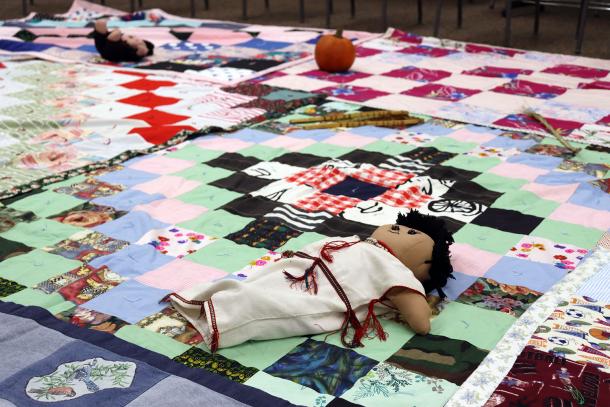
The exercise begins with participants finding a place to stand on the blankets. Kerry Saner-Harvey, Indigenous Neighbours Coordinator for MCC in Manitoba, played the role of narrator for the evening. He opened the exercise with a glimpse into the complex Indigenous cultures on the land before the arrival of Europeans.
“The exercise is kind of like a play, an interactive experience,” said Saner-Harvey. “The blankets represent Turtle Island… and all the squares, threads that are tied together are the culture and people that existed before Europeans arrived.”
Turtle Island is a name many Indigenous people used, and continue to use, for the continent of North America.
“This exercise is not to make anyone feel bad… this exercise is for us to learn from it,” said Carolyn Moar, a local Knowledge Keeper, Elder and member of Sagkeeng First Nation invited to share her experience and historical knowledge during the exercise.
Within moments of the exercise beginning, blankets were folded, crumpled and kicked into themselves to symbolize how the Europeans made treaties by exercising dominance, leading to the loss of land for First Nations communities and their members.
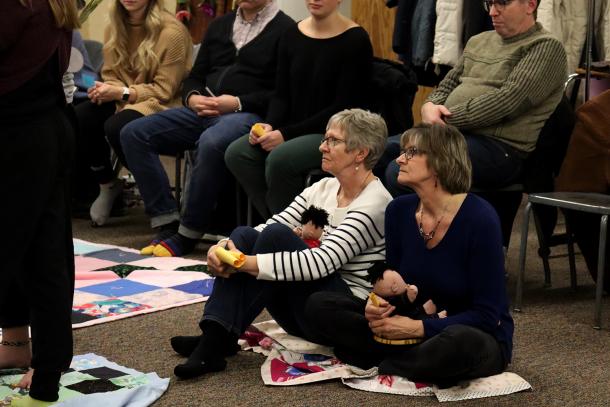
Throughout the exercise, more blankets are folded and removed. People are asked to sit down to represent loss of life from illness and conflict. By the end, there are only a few people standing in the center of the room, clinging to small corners of blankets – the only pieces of land remaining. The exercise is over.
“We don’t own anything,” commented Chelsey Hiebert after the exercise. “I found myself desiring to go back to that relationship with the land – we don’t own it, we don’t own anything.”
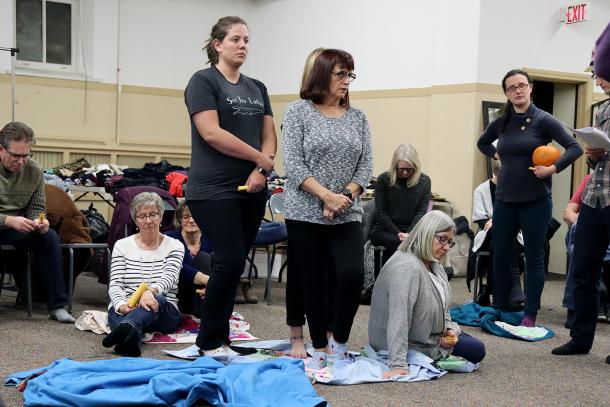
Each participant shared their reaction to the exercise, many expressing how a particular moment had been personally moving.
“I’m thankful to have been part of this,” said Froese. “I can’t imagine how painful it was [to have land and family taken away].”
Moar’s final message for participants was to pursue reconciliation through an issue important to them. “I really believe in reconciliation. Every system is against us, education, health, childcare. Pick one that’s important to you and ask us what we need. Always walk with me, not before me or behind me, but beside me.”

Photo supplied by Carolyn Moar.
“I’m very much optimistic” about reconciliation, said Moar. “Telling our story. That’s hope.”
Across Canada, MCC’s Indigenous Neighbours program seeks to bolster work like Moar’s to educate people on the history of Indigenous people and land.
To learn more about the program or to host a Blanket Exercise, visit mccmb.ca/Indigenous-Neighbours.
To learn more about the experiences of Indigenous peoples in Canada and about the Truth and Reconciliation, visit the National Centre for Truth and Reconciliation's website, https://nctr.ca/map.php.
